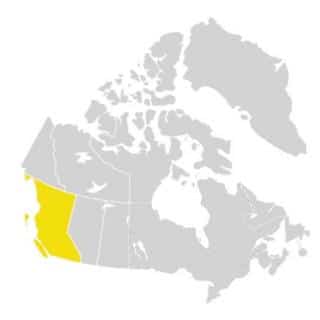

Tamarisk can be classified into three species: Tamarix aphylla, T. parviflora, and T. ramosissima. On some continents, it is reported as an invasive species since it crowds native vegetation out.
Here are a few maps that show the distribution of Tamarix across the planet. Also included is how to report sightings of this invasive plant.
Native to – Asia, Mediterranean and North Africa (depending on the species)
Invasive in – Australia, United States, South Africa, Canada, Mexico, Argentina
Tamarisk is native to Central Asia and Eastern Europe. Here is a map that shows where it grows naturally in the wild. The green area marks the native growing area of each tamarisk species.
On other continents, Tamarix is extremely invasive. It produces tens of thousands of seeds per plant every year, and they germinate fast. Within two or three decades, it can transform the local environment and wipe other plants out.
Native range: Afghanistan, Armenia, Azerbaijan, China, Iran, Iraq, Kazakhstan, Korea, Kyrgyzstan, Moldova, Mongolia, Pakistan, Russia, Tajikistan, Turkey, Turkmenistan, Ukraine, Uzbekistan
Native range: Albania, Croatia, Greece, Israel, Macedonia, Slovenia, Turkey
Native range: Afghanistan, Algeria, Egypt, Eritrea, Ethiopia, India, Iran, Kenya, Libya, Mauritania, Morocco, Pakistan, Saudi Arabia, Senegal, Somalia, Sudan, Tunisia, Yemen
This map shows reports of tamarisk throughout the United States. Every county where the plant has been reported is marked in green. It’s updated thanks to the Early Detection and Distribution Mapping System (University of Georgia).

If you notice one as you walk around, report it to Canadian wildlife agencies here.
Canada also set up a program together with horticulture stores and landscapers. It’s called “Plantwise“. Together, they wrote up a list of excellent shrubs that you can replace tamarisk with:
Currently, only a few states have laws that prohibit or restrict planting and sale of this tree. Others are currently studying the risk that this plant poses. This translates into having the plant on a “watch list” of possible invasive species.
Here is a map, also updated daily, that shows the current legal status of Tamarisk or saltcedar in the United States.
With smartphones, it becomes increasingly easy to report this invasive plant when you sight it. The EDDMapS phone app gathers GPS location data and forwards it to the agency that can best help control the weed.
We’ve had a Tamerisk bush for 25 years. We only water it during very dry times, like maybe 1x a year. We have near had a issue with it spreading. I have a hard time believing that it does. My mother inlaw had one never spread. It was never watered I don’t beleive. The bush was banned after a few years We had it but absolutely no spread. Get alot of complements how beatiful it is
Hi Kevin, thanks for your interesting comment. It’s often hard to pinpoint exactly when a shrub becomes invasive, but in the case of tamarisk there have been several field studies that show how a single tree sprouting in a place resulted in an invasion, crowding out native plants. Unless your particular tamarisk is a sterile variety (which it may be, given how strange nature is at times), if just one or two seeds make their way to a spot where they sprout and spread, then the damage is done.
I agree with you that it is a very beautiful shrub, indeed. It’s a shame to have to remove them when an ordinance forces us to, but for now, that’s just our human way of dealing with problems: it’s currently too difficult to micro-manage plants to the point that we could say “ok, this tamarisk here has an absolute zero risk of propagating to a vulnerable environment, so it’s fine to just let it be”. Imagine reaching a point where we understand nature that well!
this is hilarious. your article ends with advice on how to stop this plant from spreading, including suggesting that one advocate for legislation to ban the plant in your area (despite very few states being interested in this), and the article is immediately followed by a link to another article touting this “very easy shrub” as “ideal for seaside gardens”. 😅
Hello J. Barclay, I’m glad I wrought a laugh out of you! You’ve pointed out that it seems absurd that an article on invasive plants should also mention links to pages teaching how to grow that plant.
But this makes sense when you consider that readers come from the entire planet. Some of them come from English-speaking countries where tamarisk is native and non-invasive, like India. People there are legitimately interested in learning how to grow the shrub for their own gardens.
I did my best to write words of caution in the article on growing tamarisk, so that people in countries where it’s invasive are made aware of this. There are four mentions of invasiveness on that page, two of them links sending back to this page itself, where readers can easily identify if they’re in a native zone or not.
In the end, I do thank you for having taken the time to comment as you did. I’d appreciate your help, if you so wish, in trying to mark out other plants as invasive, I know there are certainly many I haven’t covered yet in that respect. Perhaps you also noticed other plants I should work on for this?